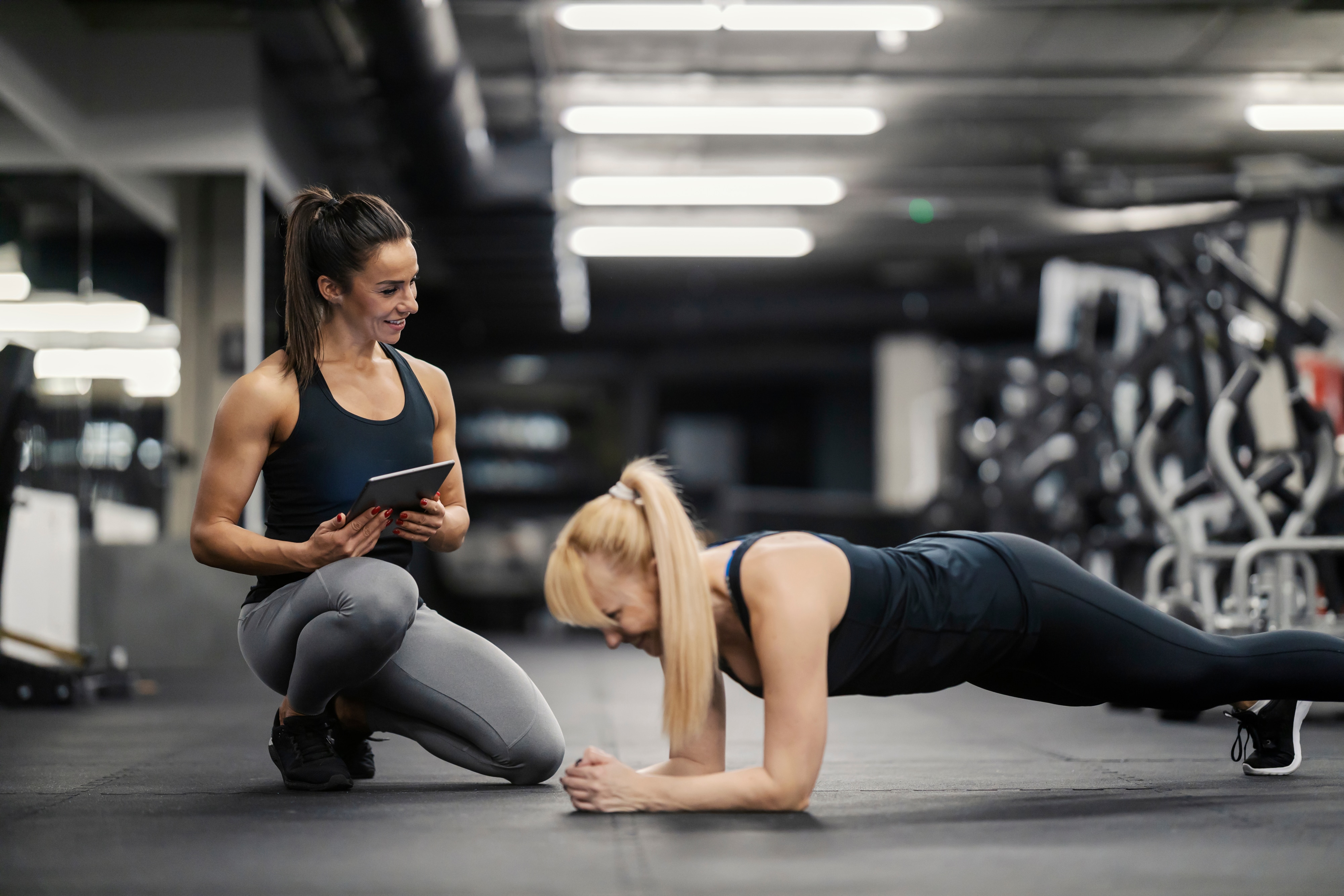Social media isn’t really optional for fitness coaches anymore—it’s essential. When potential clients are searching for a fitness coach to help them reach their goals, Facebook and Instagram are often the first places they look.
When you get only one shot at a great first impression, you’ve got to get it right. Luckily, with just a few small tweaks, your social media presence can be a natural extension of yourself and an enjoyable way to inspire and engage with other fitness trainers, friends, and potential clients.
Tip 1: How to Get Started
With an estimated 2.8 billion social media users worldwide, take some time to carve out your niche, such as staying fit while raising kids or yoga for all body types. When you know who your ideal clients are, you can strategically post the right content and attract the right people.
Fitness coaching is a visual, story-driven industry, and you can gain the best social media momentum by focusing on Facebook’s 1.56 billion daily users and Instagram’s 1 billion monthly users. Although it’s worth noting that Instagram is owned by Facebook, the platforms have different benefits and challenges, which means you need to take a different strategy on each.
One primary differentiator is that Facebook’s newsfeed can be much more chaotic than Instagram’s. With Facebook’s constant algorithm changes, the site often emphasizes content from users’ friends and family, as well as posts about timely events. With Instagram, inspiration, unique perspectives, and craftiness are the primary reasons people flock to the platform, according to Facebook Insights. But you will need to be original and eye-catching on Instagram in order to grab a user’s attention as they scroll through a sea of beautiful images.
If you haven’t already done so, create (or update) your accounts with these best practices to make sure you’re on the right track:
Facebook Page
- Create a page and choose a vanity URL.
- Add a header image or video and profile image.
- Add your bio to the “about” section, sharing who you are and what you do.
- Add any awards or certifications to the “about” section.
- Add links to LinkedIn or your website, if you have one.
- Find and like relevant pages and start interacting.
- Start posting!
- Create an account and choose a handle.
- Add a header image and profile image.
- Add your bio, sharing who you are and what you do.
- Include a few relevant hashtags (e.g., #fitness, #personaltrainer).
- Add a link to your professional website, if you have one.
- Find and follow relevant accounts and start interacting.
- Post all the pictures and stories!
It’s important to note that only the main link you include in your bio is clickable on Instagram. When people post links in their post description or comments, they’re not clickable!
Facebook Groups
It can also help to engage with Facebook groups—or even create your own members-only group for clients and potential clients. There are countless Facebook groups geared toward every hobby, fitness routine, and diet plan imaginable. You can join groups in your specific geographic area or in your area of expertise (e.g., the Dallas-Fort Worth Triathlon Club or Tone It Up Girls). Posting to these groups is another way to engage with like-minded people and connect with potential clients and followers.

Get Your Free Guide
Learn How to Start a Fulfilling, Impactful Career as a Holistic Health Coach
You’ll learn:
- Why holistic health matters
- If holistic health coaching is right for you
- What career opportunities exist for health coaches
- And more!
Tip 2: What to Post
It will likely take a bit of trial and error before you cement your fitness coaching voice on social media, so don’t be afraid to experiment and take note of which posts generate the best response from your followers, with regard to likes, comments, and follows.
A few constants across successful fitness training pages include:
1. Beautiful imagery
On a hyper-visual platform such as Instagram, beautiful photos will attract the best followers. Who doesn’t love seeing beautiful, inspirational, and dynamic pictures and videos? If you’ve been pushing gym selfies, try mixing it up by posting photos of an outdoor workout with natural lighting, like this post by AFPA student Danielle Natoni, who is putting her holistic nutrition certification to work.
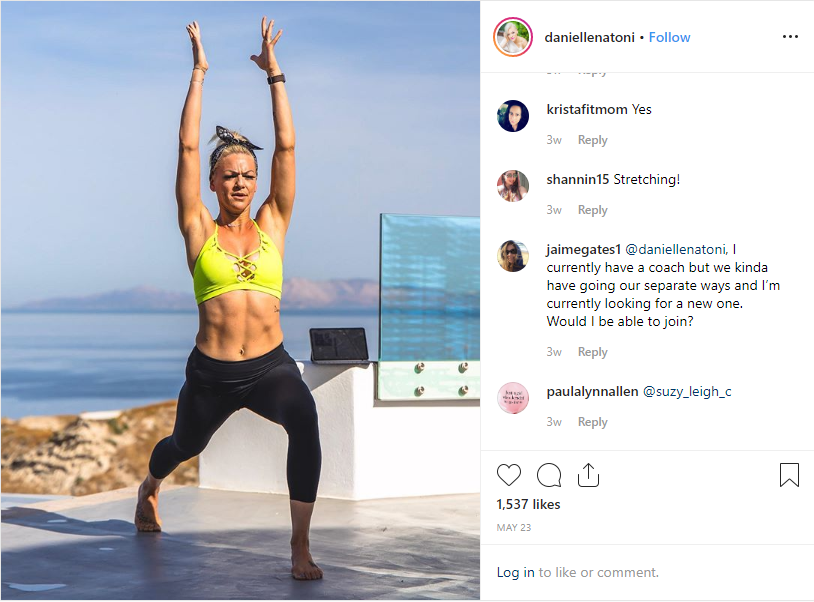
Additionally, photos and videos featuring faces tend to perform the best on Instagram, so don’t be afraid to indulge in a flattering selfie or client photo every once in a while—especially if they show off the results of your training.
2. Holistic content
Don’t just post fitness photos and videos. Remember that working out at the gym is only one piece of the healthy lifestyle puzzle. Think about everything that goes into achieving peak performance and create posts and content around that, too, such as these rockstar AFPA grads:
- Healthy eating hacks with @jennagoodroe
- Mental self-care and mindfulness with @daniellenatoni
- Personal self-care tips, such as acupuncture, yoga, massage, and more with @ravenwb
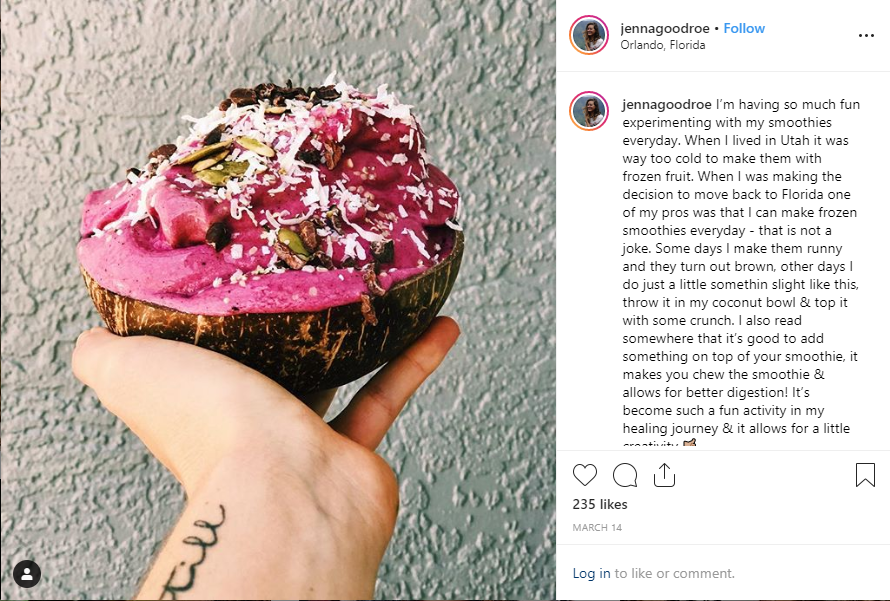
3. Authentic glimpses at your life
Although beautiful photos are an effective draw, you’ll want to balance them out with glimpses at your day-to-day life so your followers can relate to you and trust you as a real person, and not just someone living the perfect fit and healthy life. Shaun T does a good job of this by posting light-hearted videos of his daily struggle to stay fit while raising young kids.
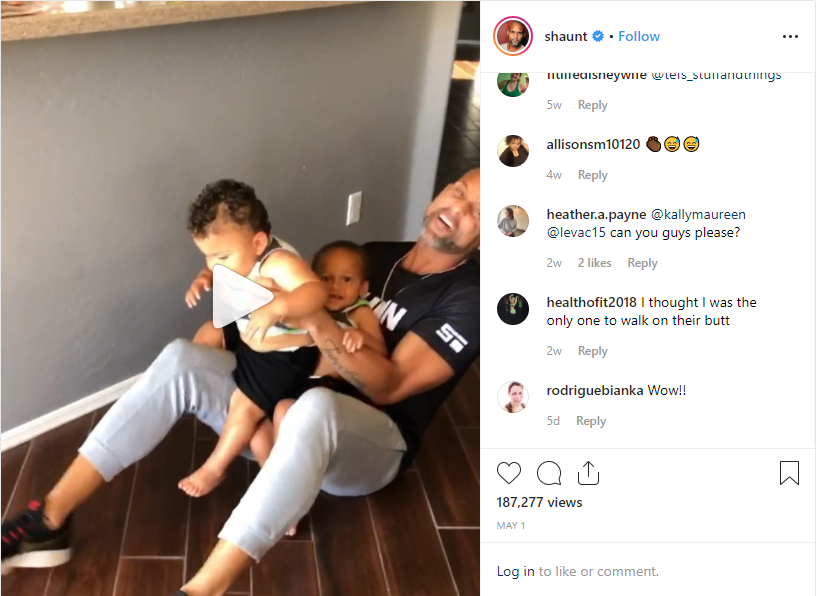
4. Before and after photos
Don’t be afraid to share real personal fitness journeys as inspiration. Your potential clients want to know that if they invest in you, you’re investing in them, too, and posting before and after photos of yourself and your clients (with their permission, of course) is an effective way to show what you’re capable of, such as what Emily Schromm does in this post.
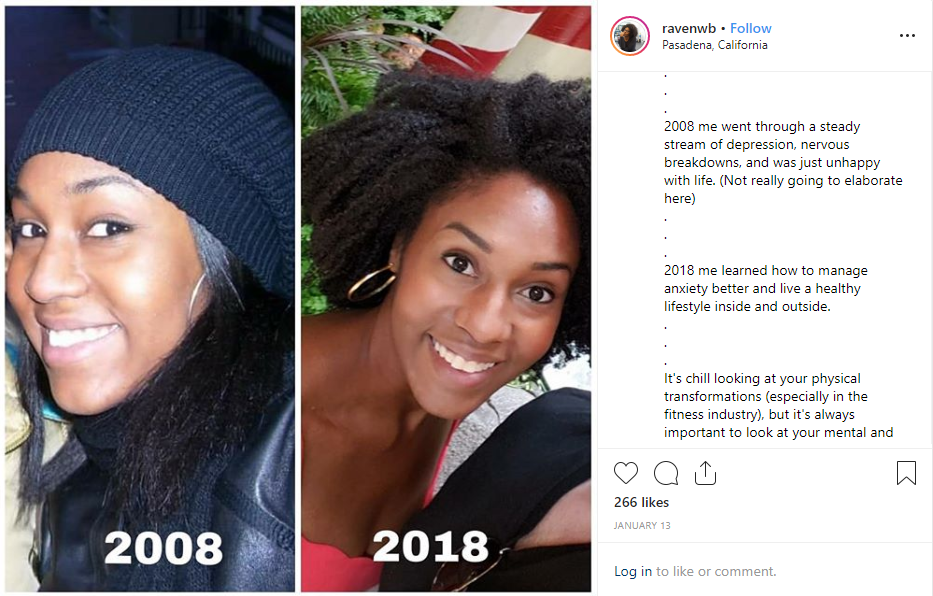
According to HubSpot, video is the number one kind of content people want to see from the brands and businesses they support, even more so than images. To keep your followers engaged and motivated, be sure to post short training videos to give them a taste of your go-to workout routines (e.g., @andyspeer and @ravenwb).
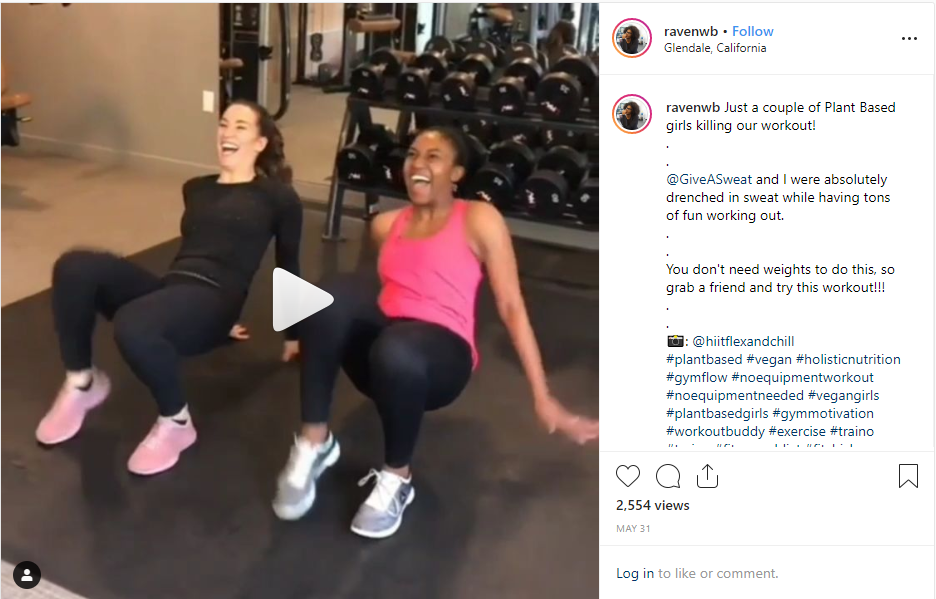
Live video on Facebook and Instagram is also an effective way to reach your audience. Live video on Facebook has an engagement rate of 4.3 percent compared to 2.2 percent for non-live video, according to Telescope.
With Instagram TV, a fitness coach can post workouts or other tutorials in longform and then link to them in their Instagram Stories. You can also try posting fitness challenges that your followers can opt into as a way to stay accountable to their fitness goals.
Tip 3: When to Post
The ideal posting frequency and timing will depend on your business goals, your following, and what social media platform you’re using. Feel free to post two or more times a day if your followers seem to stay engaged and want more. A strategy of quality over quantity is more important than ever, especially with Facebook’s algorithm changes last year, which aim to prioritize high-quality content with real value.
As for the best time of day to post, that will depend on your audience and where they’re located. According to Hootsuite, the best times for health-related pages to post are Wednesdays and Sundays at 9 a.m., likely because these are times when people are looking for a motivational boost. Mondays and Saturdays are also high-performing post days. Experiment by posting at different times, but the morning hours are likely going to be your best bet.
Tip 4: The Tools to Use
A solid social media strategy becomes exponentially more effective when you incorporate a few of the many online tools at your disposal. From built-in options provided by Facebook and Instagram that help broadcast your content to a wider audience to applications that help keep you organized across platforms, here are just a few tools to try:
- Built-in Facebook tools: For your professional page, Facebook has plenty of built-in marketing tools to use:
- You can schedule posts ahead of time (to post at peak hours or test posts at different times to see what times are best for engagement).
- You can pay to boost a post (so more people will see it), promote your page, or buy a Facebook ad that will appear in the feeds of your target audience (based on age, gender, location, and so on).
- Facebook ads can be tailored to meet a variety of objectives, such as “Lead Ads,” which will invite anyone who clicks on the post to fill out a customized form, where they can answer questions, submit feedback, sign up for an email Listserv, and more without ever having to leave the app.
- Built-in Instagram tools: Similar to Facebook, Instagram offers built-in tools to help spread your content far and wide:
- You can create an ad or pay to promote a post directed at your target audience, which could result in more followers and client leads.
- If you sell physical goods as part of your business and have a business account, you might be eligible to try Instagram’s new shopping feature, which allows users to buy products directly on the app.
- Hootsuite: Hootsuite allows you to manage and schedule posts across multiple social media platforms, including Instagram, Facebook, Twitter, and YouTube.
- Buffer: Buffer also helps you manage, schedule, and analyze your social media pages.
- Sprout Social: Social Sprout is another hub for social media publishing, analytics, and engagement.
- Wrike: Wrike is great for collaboration if you have more than one person on your team.
Show Yourself Doing What You Love, and the People Will Follow
There are endless tools and tricks across the internet that “social media experts” will swear by, but if you’re drawn to fitness coaching, the true measure of your success on social media will be the impact your message has on the people it reaches.

Get Your Free Guide
Learn How to Start a Fulfilling, Impactful Career as a Holistic Health Coach
You’ll learn:
- Why holistic health matters
- If holistic health coaching is right for you
- What career opportunities exist for health coaches
- And more!



